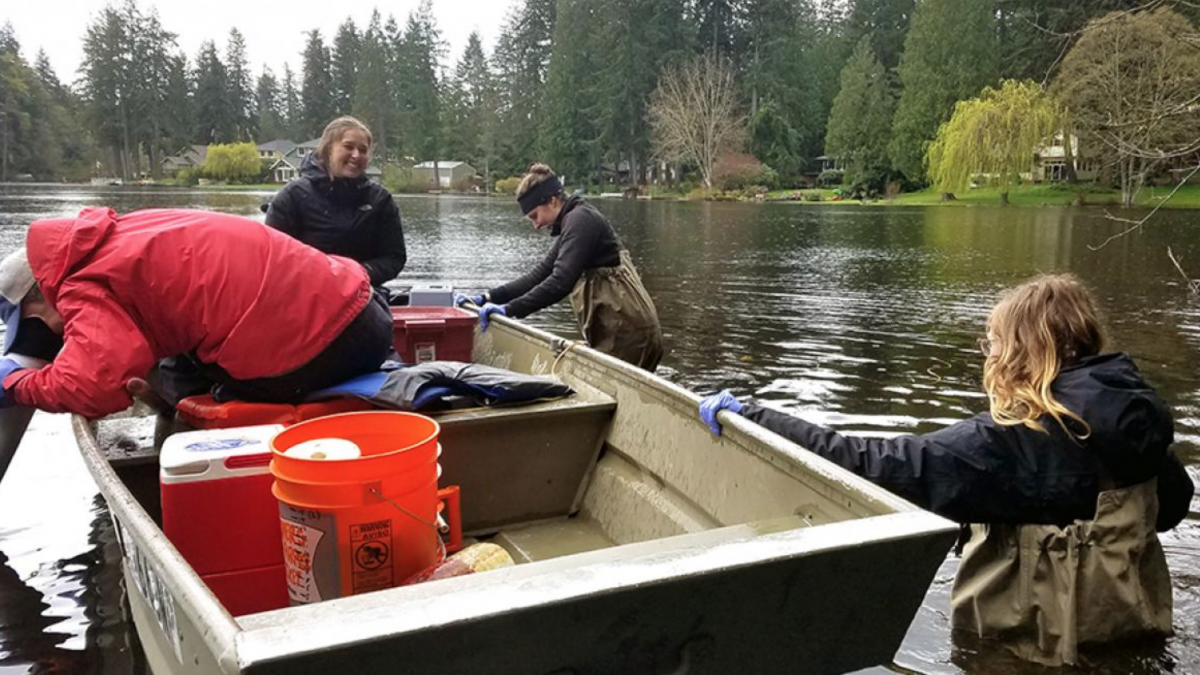
Researchers on UW SRP Project Four sample arsenic in urban lake systems.
When UW SRP researchers found new evidence that environmental contamination from a former smelter may pose a threat to human health, they were careful to inform their agency partners in advance of publication. This advance notice allowed them a chance to coordinate the necessary risk communication before engaging with potentially affected populations.
When the ASARCO smelter in Ruston, Washington closed down in 1993, it left an area of more than 1,000 square miles contaminated with heavy metals, including lead and arsenic. As a result, nearby urban lakes have high levels of arsenic in their sediments. While arsenic was once thought to stay mostly contained in lake sediments and not enter the food chain, researchers on UW SRP Project 4 showed that arsenic in shallow lakes routinely enters the water column and can be found in oxygenated surface waters where it is taken up by aquatic plants like phytoplankton, periphyton, and macrophytes.
New UW SRP results show that some of this arsenic has been making its way into other organisms as well- snails, crayfish, and sunfish. According to the Environmental Protection Agency (EPA)'s health risk estimates for ingestion of inorganic arsenic, levels in some of these organisms are high enough to pose health risks to the people who eat them.
After analyzing their results and using EPA estimates to categorize the risk posed to people who eat the lake organisms, researchers convened a meeting with representatives of local and federal agencies including Washington Department of Ecology, Washington Department of Health (WA DOH), EPA Region 10, Washington Department of Fish and Wildlife (WA DFW), King County, and Public Health-Seattle & King County (PH-SKC). Results were also shared with the Agency for Toxic Substances and Disease Registry, Region 10.
At the meeting UW SRP summarized their previous findings, their methods, and their current findings. Representatives from WA DOH and PH-SKC offered to help communicate the results to potentially affected communities by calculating meal limits for each type of organism found to be contaminated with arsenic. They presented the results of these calculations in a follow up meeting. WA DFW also requested a follow up meeting to discuss the possibility of expanding sampling to other lakes.
In coordination with the UW SRP community engagement core, Project 4 researchers have reached out to the Muckleshoot and Puyallup Tribes in an attempt to establish whether Tribal members typically harvest food from the contaminated lakes.
Meetings with Lake Association members were also conducted prior to publication of the results. Researchers have been in regular contact with members of the Lake Associations for each of their sampling sites since the study began. They want to ensure that members are kept updated on the latest results before they are made public. The study has now been published in Science of the Total Environment.
Read the full manuscript here.

